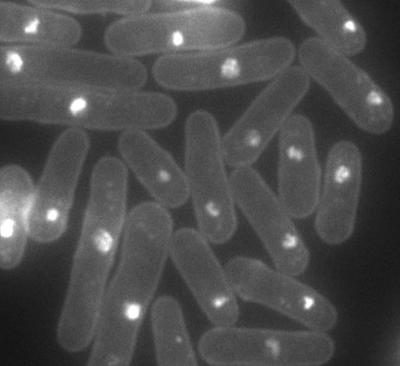Vital Signs » Winter 2018

It was a bit of a pleasant surprise for a team of researchers at the Wright State University Boonshoft School of Medicine. Using yeast, they have found what could one day be a new and more effective antifungal therapy.
The findings were unexpected for the team, who initially began looking at yeast cells and their response to DNA replication stress. They were screening for different mutations after cells were treated with hydroxyurea, a medicine that blocks DNA replication and is used to treat sickle-cell disease, leukemia, cervical cancer, and other diseases.
They chose yeast as the study subject because it’s something that can be easily cultured and grows quickly in the lab. The hope was to find new mutants with defects in cellular response to DNA replication stress. This would help to better understand the biological process and possibly reveal a new way to hinder cancer cell growth and induce cancer cell death. But instead of finding new aspects of cellular response to replication stress, they ended up finding what could possibly become a new antifungal therapy.
“In the beginning, we were really puzzled by our new mutations, because besides the known cellular target of hydroxyurea in DNA replication, no previous report was saying that hydroxyurea could be targeting something else,” said Yong-Jie Xu, M.D., Ph.D., associate professor in the Department of Pharmacology and Toxicology at the Wright State University Boonshoft School of Medicine.
“In the end, it turned out to be very interesting,” he said. “So, more or less, we aimed to go from A to B, but we zigzagged from A to C. And C turned out to be a good destination too.”
One of Xu’s Ph.D. students, Amanpreet Singh, led the research project. The original intent was to study the cellular response to replication stress caused by hydroxyurea, because that would provide deeper understanding of cancer chemotherapeutic mechanisms. Xu and his team wanted to better grasp mutations and genome stability of normal cells to improve treatments. But instead of finding only mutations in replication stress response, they also found other mutations such as those affecting the biosynthesis of heme or sterol that are highly sensitive to hydroxyurea. By combining an inhibitor of heme or sterol synthesis with hydroxyurea, they found new drug combinations that could kill fungal pathogens.
“It worked synergistically to kill the fungal cells. It’s very robust,” Xu said. “What I mean by synergistically is that it’s not just one plus one equals two. You add it together and you get three, four, or five.”
Next steps for the researchers are to test the new treatment method on other fungal pathogens. There are also other mutations in Xu’s lab that still need to be characterized in order to uncover more therapeutic targets.
“Once we characterize each new mutation, we can potentially also find a new way of combining drugs. And our idea is to find more efficient, safer drug combinations that can tackle fungal diseases, particularly the serious issues associated with drug resistance and systematic infections,” Xu said. “The idea is to maximize the therapeutic effects and at the same time to minimize side effects of the drugs. That’s an advantage of using drug combinations instead of single-drug therapy.”
— Daniel Kelly

